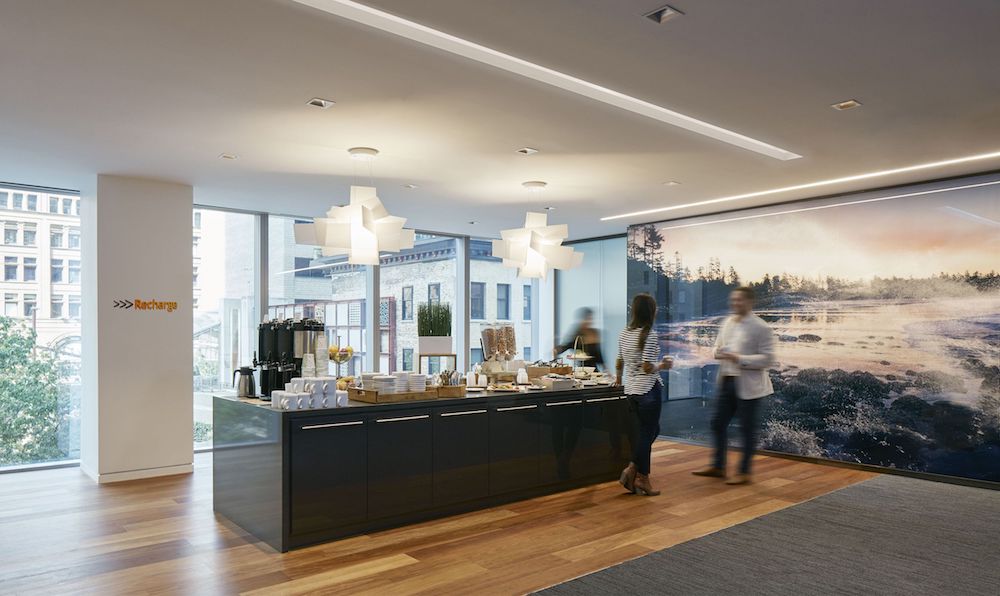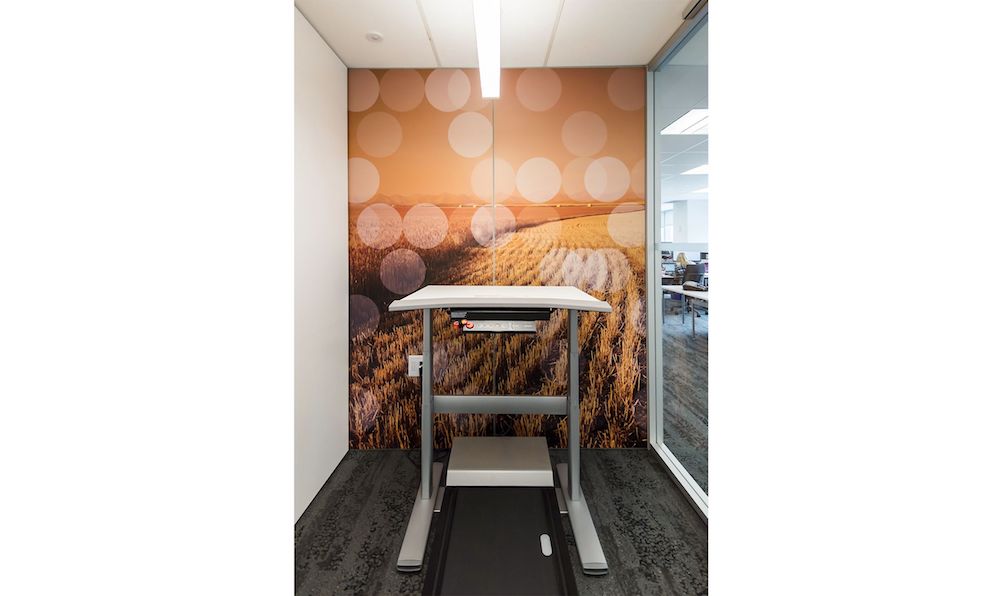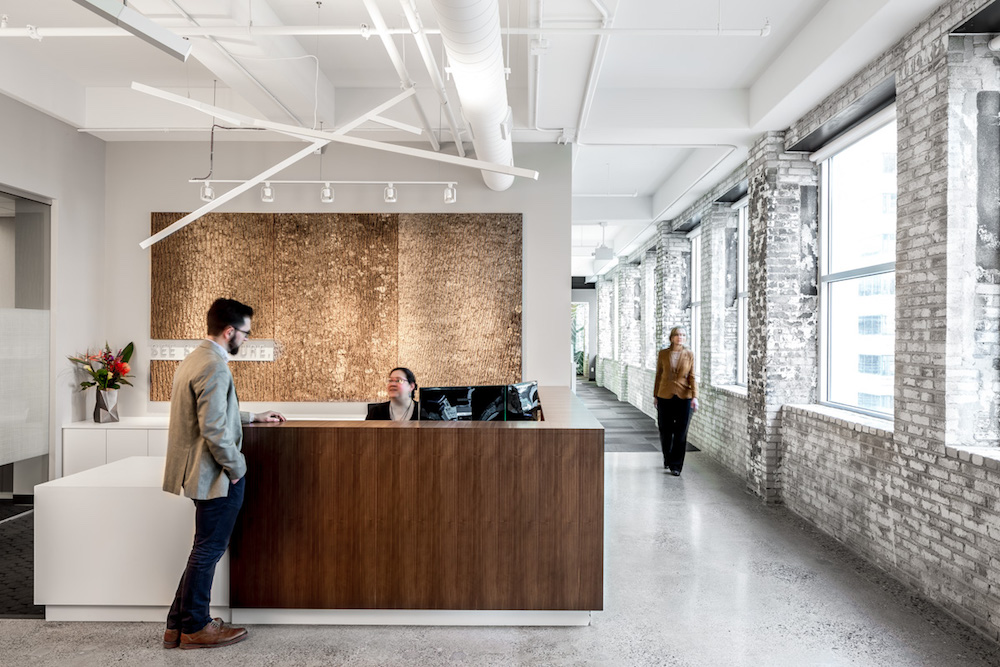How do you ensure a safe and healthy work environment without compromising the experience?

This article is part one in a series of three focused on workplace wellness. Make sure to check out part two here!
There has been no greater time to focus on our experience of the built environment than now, when many of us have been required to work, study, and experience the world around us from the safety of our homes. However, long before COVID-19, there was a growing focus on how the built environment, particularly the workplace, fosters our health and well-being. A major signal of this came in the introduction of the WELL Building Standard, focusing exclusively on human health and well-being. WELL quickly became a new goalpost for our industry as a perfect complement to LEED. In this article we will review basic principles surrounding workplace wellness, especially as we consider returning to work in the midst of a pandemic.
The global impact of COVID-19 has brought to light the vulnerabilities and stressors that we all have as individuals, how they relate to the work we do, and what is needed for us to return to the workplace. Particularly in these early stages as we transition back to the office, we need to instill confidence and safety in our employees so they know what they can expect when they come back in and understand that the company is prioritizing employees’ health.

Spatial Familiarity and Our Sense of Place
Key to individuals’ psychological health is the degree of familiarity they have with their physical environment, and their understanding of how they can move through that environment. According to Heidegger (1962), we are naturally spatial beings when understanding our place in the world, and this spatial understanding of our environment influences how we think, feel, and behave. Spatial familiarity is established through wayfinding, which creates pathways for people, affirms and gives them a sense of arrival at key destinations, and helps to designate various zones and neighborhoods throughout the building that have different uses. Through the creation of zones, landmarks and other intuitive cues, wayfinding can help promote more social interaction, encouraging people to explore the ‘road less travelled’, and enjoy different spaces and activities they might otherwise overlook.
Deloitte had a vision of creating a work environment intended to “inspire, encourage, engage, and cultivate growth, learning and collaboration.” By giving each floor a different character, or flavor, reinforced through color, graphics, and wayfinding cues, people were enabled to choose an area they want to work in and to feel a sense of neighborhood.

In these times of the pandemic, it is important to look at the approach to circulation. If people don’t feel that they can easily move around their workplace, they will feel trapped at their desk, then they won’t be able to benefit from those social aspects of the office that enticed them to return in the first place. With or without the concerns of COVID-19, the key principles of effective wayfinding remain true: the system should be seamless, and importantly, intuitive, easy to use, and visually pleasing.

Encouraging Healthy Behaviors Through Behavioral Nudging
Another concept that becomes ever more relevant in present conditions is the notion of behavioral nudging – the intentional inclusion of ‘cues’ through graphics, messaging, and wayfinding to introduce and promote ideal behaviors in a space. These cues may be more explicit in relation to the WELL Standard, such as providing nutritional health information related to food and exercise. These nudges could also be in the form of wayfinding signage that guides occupants toward stairways to encourage this healthier form of movement throughout the building (as opposed to the use of elevators or escalators).
This strategy was used at the headquarters of Sobeys, Canada’s second largest food retailer, with a stairway chalkboard for employee messages and news to encourage stair use, while also creating a sense of community. Using Sobeys’ own food photography underscored the company’s purpose: to help Canadians Eat Better, Feel Better and Do Better, while also promoting this same message of health and nutrition to staff. Beyond the basic features of WELL, behavioral nudging can be a strong tool to promote distancing, hygiene, and other behaviors that prevent the spread of viruses such as COVID-19.

Access to Nature
All of us have an innate attraction to nature. Views and access to nature in the workplace can reduce employee stress, diminish levels of tension and anxiety, increase energy and productivity, promote greater job satisfaction, and improve employees’ overall sense of well-being (Dreyer, 2018). In the workplace, this can be accomplished through a variety of strategies, including biomimicry, the strategy of mimicking patterns, colors and other characteristics found in nature, to appeal to our biological attraction to natural forms. The use of naturally preserved plants can also provide maintenance-free biophilic design solutions that eliminate the need for watering, misting, or irrigation. With these strategies, access to nature is inclusive to everyone, regardless of where they may be located in a building.

As we return to the office and come together to collaborate, building relationships and supporting well-being will be vital for organizations to thrive rather than survive. The workplace will also need to support safer and healthier work environments to minimize potential anxiety and stress. A study completed in February 2020, found that 10.8 percent of the workforce developed Post Traumatic Stress Disorder (PTSD) after returning to work during the COVID-19 epidemic in China. Several preventive strategies could decrease the likelihood of this and other negative mental health effects including personal psychoneuroimmunity prevention (the study of how emotions and thoughts impact the brain, hormones, nervous system, and the immune system). These strategies can be both on the individual level, such as frequent hand washing and wearing a face mask, and on the company level, with significant improvement of workplace cleaning procedures, and implementations that consider employee health (Tan, 2020). Restrooms and break rooms or work cafes are a critical component to this workplace hygiene. Incorporating touch-free open entrance and exit allows for one-way traffic. Pairing sinks with paper towel dispensers and trash makes everything easy and within reach and reducing movement in sometimes smaller spaces. Having clear protocols on how and when to use the space can help reduce tension and anxiety.

Expectations of the workplace have transformed due to the pandemic, and will have a greater influence on the health of employees and visitors more than ever before. A focus on mental health that reduces stress, eases wayfinding, and provides access to nature, will promote restoration, relaxation, and relief from mental fatigue or stress. Additionally, research has shown these characteristics promote collaboration, innovation, and productivity. While we think about the short-term and necessary strategies we need to implement in our workplaces to get people safely back to the working environment, we should also think about how the investments can be immensely beneficial for the workplace of the future.


There is great information here. Having access to nature at work can be a subtle way to lift spirits.